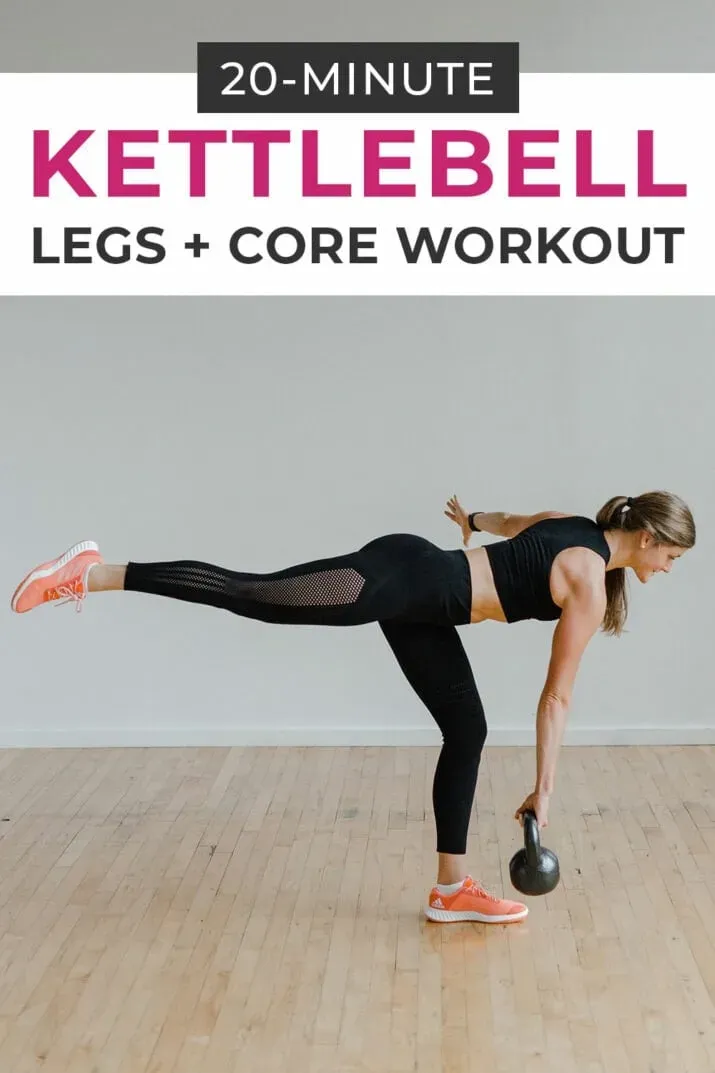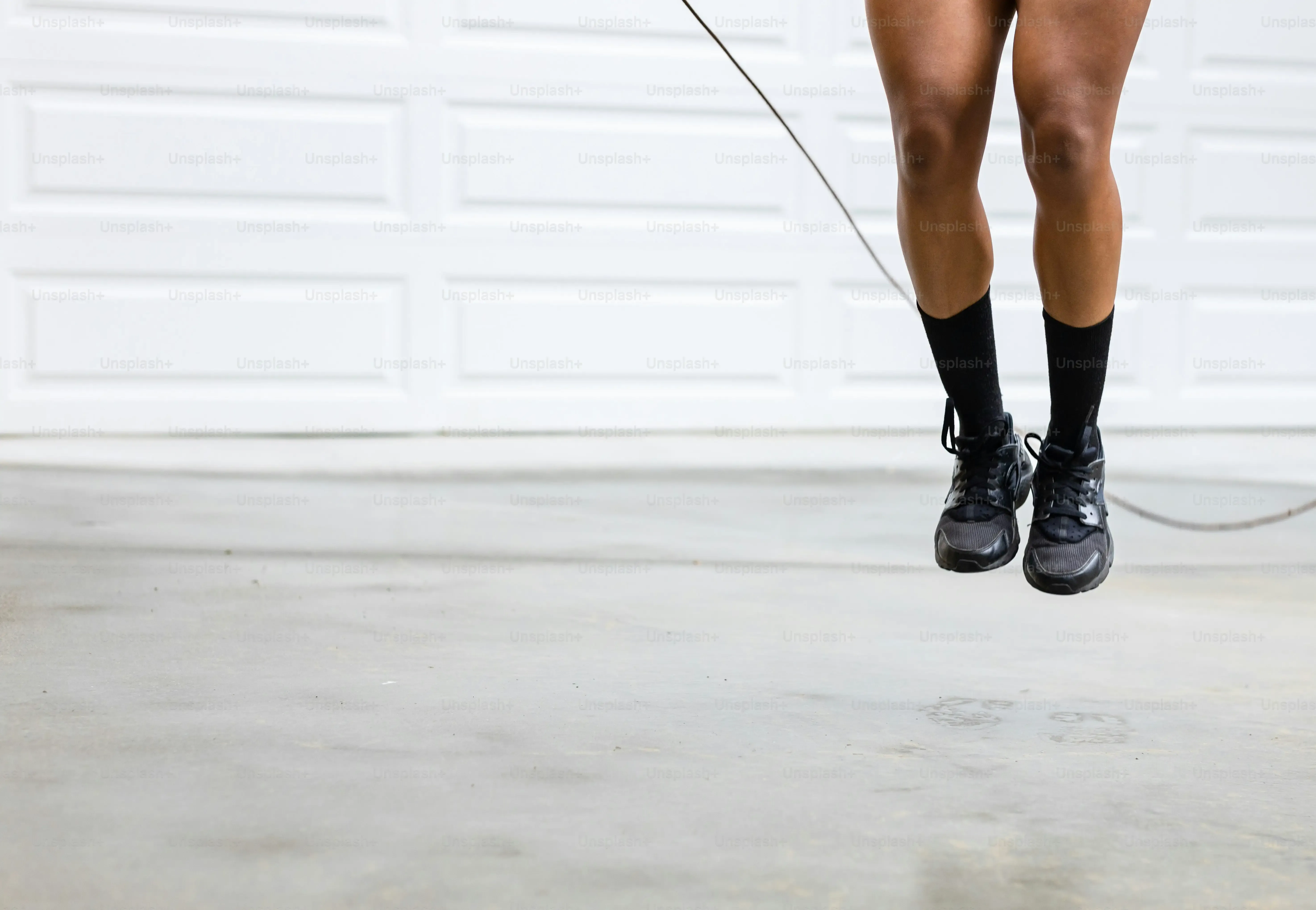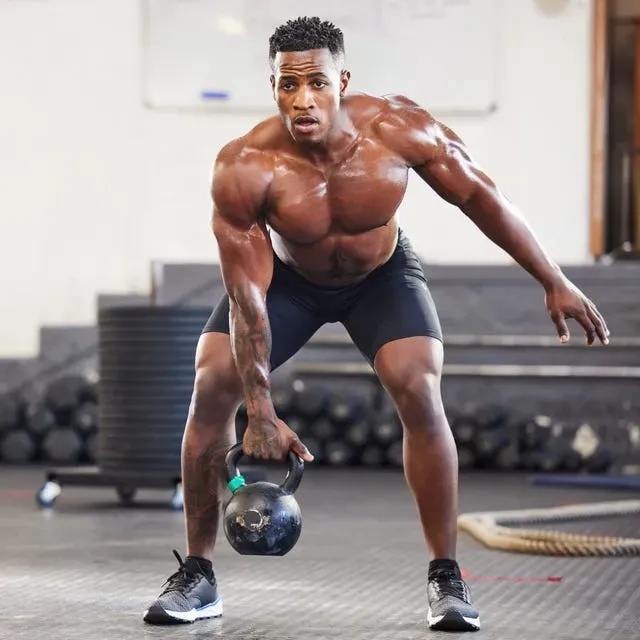Table of Contents
Let's be honest, leg day can feel like a chore. You might be tired of the same old barbell squats or machine work, searching for something that actually challenges you and feels... well, effective. If your current routine feels stale or you're just not seeing the results you want below the belt, maybe it's time to pick up a different kind of weight. That's where a solid kettlebell workout legs routine comes into play.
Why Use Kettlebells for Leg Day?

Why Use Kettlebells for Leg Day?
Look, if you've been stuck in the same old leg day rut, maybe it's time to ask yourself, "Why use kettlebells for leg day?" The answer isn't just about looking cool swinging a cannonball around. Kettlebells force your body to stabilize in ways traditional weights often don't. That off-center handle and the way the weight shifts during movements means your core, hips, and stabilizer muscles are constantly firing. You're not just moving weight; you're controlling it through space. This translates to better balance, improved coordination, and hitting those smaller, often neglected muscles that support your bigger lifts. It's less about isolating one muscle group and more about integrated, functional strength that actually helps you move better in the real world, not just in the gym mirror.
Essential Kettlebell Workout Legs Exercises

Essential Kettlebell Workout Legs Exercises
Starting Strong: The Goblet Squat and Swing
Alright, let's get down to brass tacks on what makes a kettlebell workout legs routine actually work. You can't talk kettlebells and legs without starting with the goblet squat. This is your absolute fundamental. Holding the kettlebell at your chest forces you to maintain an upright torso, which is fantastic for grooving proper squat mechanics. It's less about ego lifting and more about control and depth. Nailed the goblet squat? Great. Now, the kettlebell swing. This isn't some flimsy arm exercise; it's a powerful hip hinge that works your posterior chain – your glutes and hamstrings – like almost nothing else. Think explosive hips, not lifting with your arms. These two moves alone can build a formidable base for any kettlebell workout legs session.
Moving Beyond the Basics: Lunges and Deadlifts
Once you've got the swing and goblet squat locked in, it's time to add some complexity to your kettlebell workout legs arsenal. Single-leg movements are crucial for fixing imbalances and building stability. Kettlebell walking lunges are brutal in the best way, challenging your balance and hitting each leg independently. You can hold one kettlebell in the goblet position or one in each hand. Then there's the kettlebell deadlift, particularly the Romanian deadlift (RDL). This hammers your hamstrings and glutes, teaching you to hinge properly without rounding your back. It's a different feel than a barbell RDL, often allowing for a greater range of motion and requiring intense hamstring tension at the bottom.
- Kettlebell Goblet Squat: Foundation of lower body strength.
- Kettlebell Swing: Explosive hip power, posterior chain dominant.
- Kettlebell Walking Lunge: Single-leg strength and balance.
- Kettlebell Romanian Deadlift: Hamstring and glute focused hinge.
- Kettlebell Bulgarian Split Squat: Intense single-leg quad and glute work.
- Kettlebell Sumo Squat/Deadlift: Wider stance, hits inner thighs and hips differently.
Designing Your Kettlebell Workout Legs Routine

Designing Your Kettlebell Workout Legs Routine
Starting Point: Goals and Weight Selection
Alright, so you've got the basic moves down. Now, how do you actually build a fullkettlebell workout legssession that doesn't just feel like random swinging? First, figure out what you're even trying to accomplish. Are you chasing strength, endurance, or maybe a bit of both? Your goal dictates your reps and sets. For strength, think heavier weight, fewer reps (say, 5-8). Endurance? Lighter weight, higher reps (10-15+). Picking the right kettlebell weight is key here. Don't be a hero and grab the heaviest one first. Start with something you can comfortably control for 8-10 reps with good form. It's better to go a little lighter and nail the movement than to struggle and risk tweaking something. Remember, you can always go up in weight next week. Nobody's judging... okay, maybe a little, but who cares?
Structuring Your Session: Warm-up, Main Lifts, and Finishers
A solidkettlebell workout legsisn't just jumping straight into swings. You need a structure. Always start with a dynamic warm-up – think leg swings, hip circles, bodyweight squats, maybe some light goblet squats with no weight just to get things moving. This preps your joints and muscles for the work ahead. Your main lifts are where you hit your heaviest sets on those foundational moves like goblet squats, deadlifts, or split squats. Pick 2-3 main exercises and focus on quality reps. After the main course, you can add a finisher – maybe a high-rep swing set for endurance, or some walking lunges until your legs feel like jelly. This structure ensures you're working efficiently and safely through your routine.
- Warm-up: 5-10 minutes dynamic movements.
- Main Lifts: 2-3 exercises, focus on strength or hypertrophy rep ranges (e.g., 3-4 sets of 6-10 reps).
- Accessory Work: 1-2 exercises targeting specific areas (e.g., single-leg work, calf raises).
- Finisher: Optional, higher intensity or volume to wrap up (e.g., high-rep swings, timed wall sits).
- Cool-down: Light stretching, breathing.
Common Mistakes in Kettlebell Workout Legs

Common Mistakes in Kettlebell Workout Legs
Swinging Like a Door, Not a Hinge
Alright, let's talk about messing things up. The most glaring error I see with kettlebell workout legs, especially with swings, is treating it like an arm exercise or a squat. People bend their knees way too much, letting the kettlebell drop between their legs like a pendulum, and then lift with their shoulders. This isn't a squat swing, and it's definitely not how you build power or protect your lower back. The swing is a hinge! Think about slamming a car door with your hips. Your knees have a slight bend, sure, but the power comes from your glutes and hamstrings driving your hips forward explosively. The kettlebell is just a heavy extension of that hip drive. If you're feeling it mostly in your arms or lower back, you're swinging it wrong. Period.
Ignoring the Single-Leg Struggle
Another classic blunder in kettlebell workout legs is sticking only to bilateral (two-legged) movements like squats and deadlifts. Look, those are great, but they don't tell the whole story of your leg strength or address potential imbalances. Your body moves on one leg a lot – walking, running, climbing stairs. Neglecting single-leg work like lunges, split squats, or single-leg RDLs with kettlebells means you're leaving strength on the table and potentially setting yourself up for issues down the road. One leg might be significantly weaker than the other, and you wouldn't even know it until something pops. Challenge each leg individually; it pays dividends in stability and balanced strength.
- Mistake 1: Poor hip hinge technique (swinging with arms/squatting).
- Mistake 2: Skipping single-leg kettlebell exercises.
- Mistake 3: Lifting too heavy too soon, sacrificing form.
- Mistake 4: Rushing reps instead of controlling the weight.
- Mistake 5: Forgetting to brace the core during lifts.
Taking Your Kettlebell Workout Legs Further

Taking Your Kettlebell Workout Legs Further
Adding Complexity and Load
So, you've mastered the basics and your standard kettlebell workout legs routine feels a bit... easy? Time to turn up the heat. Progression isn't just about grabbing a heavier bell, though that's definitely part of it. You can add complexity to the movements you already know. Think about single-leg variations with more load, like holding two kettlebells for Bulgarian split squats (one in each hand, or racked). Or try deficit work – standing on a plate for your RDLs to get a deeper stretch in the hamstrings. You can also play with tempo, slowing down the eccentric (lowering) phase of a squat or lunge to increase time under tension. Don't be afraid to stack movements, like a clean into a squat, which demands more coordination and power.
Integrating Complexes and Flow
Beyond just individual exercises, you can take your kettlebell workout legs to the next level by chaining movements together into complexes or flows. A complex is doing several exercises back-to-back without setting the kettlebell down, completing all reps of one move before going to the next. An example might be 5 deadlifts, immediately into 5 cleans, into 5 squats, into 5 overhead presses (if your shoulders are up for it). This builds incredible work capacity and hits your legs under fatigue. Flows are more fluid, transitioning smoothly from one movement to the next, often incorporating swings, cleans, squats, and lunges in a continuous sequence. This isn't just about strength; it's about movement mastery and building endurance in those leg muscles while taxing your cardiovascular system. It’s like dancing with a heavy partner who occasionally tries to trip you.
- Double Kettlebell Front Squats: Holding two bells racked at your chest.
- Deficit Romanian Deadlifts: Standing on a platform for increased range.
- Kettlebell Clean and Squat: Combines power and strength.
- Kettlebell Leg Complexes: Chaining deadlifts, cleans, squats, etc.
- Single-Leg Squats to Box: Progressing towards pistol squats.
Wrap Up: The Last Swing on Leg Day
So, there you have it. Ditching the traditional iron for a kettlebell on leg day isn't just about looking cool; it's about building a stronger, more functional lower body that actually works in the real world. These exercises hit muscles from angles you might not be used to, forcing your core to stabilize and improving coordination you didn't know you were missing. You won't just lift heavier; you'll move better. Give these kettlebell workout legs moves a shot, build a routine that fits your goals, and see what happens. It might just be the kick in the pants your leg training needed.